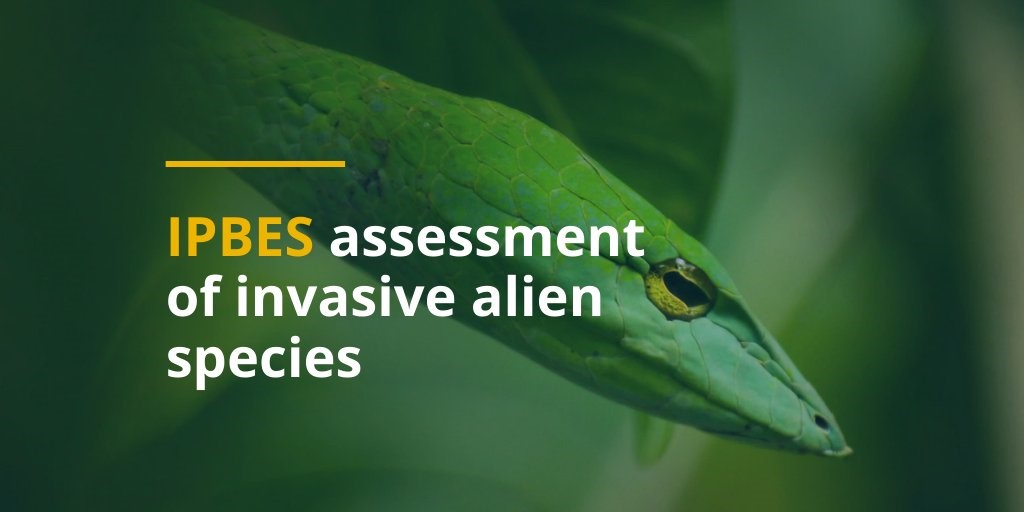





Disclaimer: Copyright infringement not intended.
Context
The Invasive Alien Species Assessment
Findings
By the Numbers – Key Statistics and Facts from the Report
Species
Impacts
Policy and Management
|
KUNMING-MONTREAL GLOBAL BIODIVERSITY FRAMEWORK The Kunming-Montreal Global Biodiversity Framework (GBF) is an outcome of the 2022 United Nations Biodiversity Conference. Its tentative title had been the "Post-2020 Global Biodiversity Framework". The GBF was adopted by the 15th Conference of Parties (COP15) to the Convention on Biological Diversity (CBD) on 19 December 2022. It has been promoted as a "Paris Agreement for Nature". It is one of a handful of agreements under the auspices of the CBD, and it is the most significant to date. It has been hailed as a "huge, historic moment" and a "major win for our planet and for all of humanity. Goals The GBF contains 4 Global Goals ("Kunming-Montreal Global Goals for 2050") and 23 targets ("Kunming-Montreal 2030 Global Targets"). "Target 3" is especially referred to as the "30 by 30" target. It succeeds the Strategic Plan for Biodiversity 2011-2020 (including the Aichi Biodiversity Targets). It specifies that countries must stop subsidizing activities that destroy wilderness, such as mining and industrial fishing. The Four Goals are: 1.The integrity, resilience, and connectivity of ecosystems is maintained, enhanced, or restored, substantially increasing the area of natural ecosystems by 2050, and the human-induced extinction of threatened species is halted, and that by 2050, extinction rate and risk of all species are reduced tenfold, and the abundance of native wild species is increased to healthy and resilient levels; and that the genetic diversity within populations of wild and domesticated species,is maintained, safeguarding their adaptive potential. 2.Biodiversity is sustainably used and managed and nature’s contributions to people, including ecosystem functions and services, are valued, maintained and enhanced, with those currently in decline being restored, supporting the achievement of sustainable development, for the benefit of present and future generations by 2050. 3.The monetary and non-monetary benefits from the utilization of genetic resources, and digital sequence information on genetic resources, and of traditional knowledge associated with genetic resources, as applicable, are shared fairly and equitably, including, as appropriate with indigenous peoples and local communities, and substantially increased by 2050, while ensuring traditional knowledge associated with genetic resources is appropriately protected, thereby contributing to the conservation and sustainable use of biodiversity, in accordance with internationally agreed access and benefit-sharing instruments 4. Adequate means of implementation, including financial resources, capacity-building, technical and scientific cooperation, and access to and transfer of technology to fully implement the Kunming-Montreal global biodiversity framework are secured and equitably accessible to all Parties, especially developing countries, in particular the least developed countries and small island developing States, as well as countries with economies in transition, progressively closing the biodiversity finance gap of $700 billion per year, and aligning financial flows with the Kunming-Montreal Global Biodiversity Framework and the 2050 Vision for Biodiversity. Implications The implementation of the GBF will likely lead to the following effects:
The GBF is not a legally binding treaty, but it is expected to have a major impact in countries around the world as they endeavor to meet their targets, through the development of new plans and regulations. For example, protected areas will be expanded and subsidies for ecologically destructive activities such as fishing will have to be redirected. |
|
PRELIMS PRACTICE QUESTION Q. Consider the following statements with reference to the Kunming-Montreal Global Biodiversity Framework. 1.The Kunming-Montreal Global Biodiversity Framework (GBF) is an outcome of the 2022 United Nations Biodiversity Conference. 2.The GBF is a legally binding treaty. 3.It succeeds the Strategic Plan for Biodiversity 2011-2020 (including the Aichi Biodiversity Targets). 4.It specifies that countries must stop subsidizing activities that destroy wilderness, such as mining and industrial fishing. How many of the above statements are correct? A) Only 1 B) Only 2 C) Only 3 D) All Answer: C) Only 3. Statement 2 is incorrect. |







© 2025 iasgyan. All right reserved